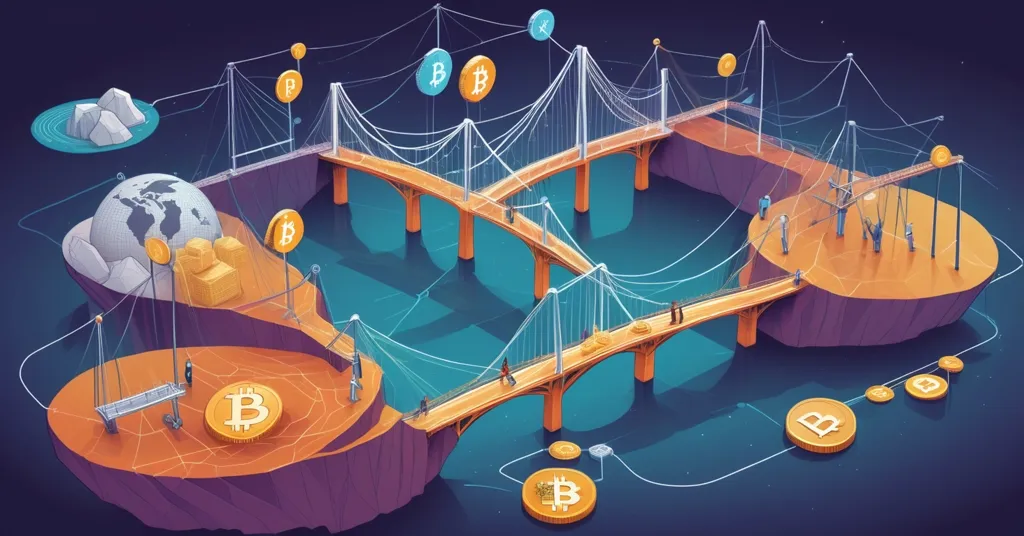Unlocking Global Liquidity: The Key to DeFi’s Future – Overcoming Fragmentation

Unlocking Global Liquidity: The Key to DeFi’s Future
Decentralized Finance (DeFi) faces a critical challenge: fragmented liquidity across blockchains, with over $400 billion in assets locked in silos. This hinders growth and competition with traditional finance.
- Fragmented liquidity stifles DeFi’s growth.
- A global liquidity layer is crucial for DeFi’s evolution.
- Collaboration and shared infrastructure are essential to unlock DeFi’s potential.
DeFi aims to revolutionize finance, yet it struggles with a significant hurdle: liquidity fragmentation. With billions in assets trapped across various blockchains, DeFi can’t match the seamless liquidity of traditional finance (TradFi). Altan Tutar, co-founder and CEO of MoreMarkets, puts it bluntly: “This leaves over $400 billion worth of idle assets locked across siloed chains whilst protocols across DeFi compete for limited liquidity, their demand vastly outsizing the available supply.” It’s like having money in different banks that can’t easily transfer between them.
Traditional finance thrives on deep, integrated capital markets that allow for efficient asset movement. DeFi’s fragmented ecosystem, however, leaves even high market cap tokens like XRP, Bitcoin, and Dogecoin underutilized, with low total value locked (TVL), which represents the amount of assets currently staked or used in DeFi protocols. This gap underscores the need for a global liquidity layer to unlock these assets and enable seamless cross-chain transactions.
The Problem
DeFi’s liquidity fragmentation is a major roadblock. Imagine trying to move funds between blockchains—it’s like transferring cash between banks on opposite sides of the world. This issue leaves over $400 billion in assets idle, hampering DeFi’s ability to scale and compete. High market cap tokens like XRP, Bitcoin, and Dogecoin have a high market cap but low TVL, showing just how underutilized these assets are in DeFi.
Current Solutions
To address this, protocols like Wormhole and LayerZero are working on solutions to enable cross-chain transactions. These initiatives aim to create a more interconnected DeFi landscape, allowing liquidity to flow freely across chains. Wormhole, for example, facilitates secure cross-chain communication, enabling assets to move between different blockchains like Ethereum and Solana. LayerZero, on the other hand, focuses on interoperability, allowing developers to build applications that can interact with multiple blockchains simultaneously. These technologies could help DeFi projects function more like large-scale financial institutions, driving innovation and growth.
The Role of Collaboration
Achieving a global liquidity layer requires more than just tech solutions. As Tutar argues, “Without a global liquidity to unlock these idle assets and enable a shared source of liquidity, DeFi will struggle to supplant traditional finance and reach global adoption.” Collaboration among major DeFi ecosystems is crucial. It’s about establishing shared standards and decentralized coordination mechanisms to move beyond isolated solutions and create a unified liquidity infrastructure. This isn’t just about improving efficiency; it’s about realizing DeFi’s mission to offer a more accessible, decentralized, and fair financial system.
Future Vision
A shared liquidity infrastructure could transform DeFi. Platforms like Avalanche, Cardano, and Base could host markets in this global layer, creating cross-chain markets and improving asset utilization. For instance, a DOGE market on Avalanche or a Cardano market on Base could showcase the power of a unified DeFi ecosystem. This vision would reduce reliance on short-term incentives and allow DeFi to follow TradFi’s lead in breaking free from the cycle of fragmented liquidity.
Yet, the path forward requires a cultural shift within the industry. The allure of memecoins and short-term gains must give way to sustainable, long-term growth. DeFi’s future depends on moving towards a world where liquidity moves freely across chains, without needing a blockchain visa for your DOGE to party with your BTC.
Counterpoints and Challenges
While the promise of global liquidity is exciting, we can’t ignore the potential downsides. Critics argue that a global liquidity layer could introduce new security risks, with more points of failure and increased vulnerability to attacks. Regulatory hurdles also loom large, as cross-chain transactions might face scrutiny from governments seeking to control financial flows. Moreover, the technical complexity of integrating diverse blockchains could slow progress and complicate development. It’s important to consider these challenges as we push for a more interconnected DeFi ecosystem. Let’s cut the crap—fragmented liquidity is killing DeFi’s potential, but solving it isn’t a walk in the park.
Conclusion
Unlocking global liquidity is the key to DeFi’s future. It’s not just a technical challenge but a fundamental step towards realizing DeFi’s potential to redefine finance. The journey requires collaboration, innovation, and a willingness to tackle the tough issues head-on. The stakes are high, but so are the rewards for those who believe in DeFi’s mission to create a more accessible, decentralized, and fair financial system.
Key Takeaways and Questions
- What is the primary challenge facing DeFi’s growth?
The primary challenge is the fragmentation of liquidity across different blockchains, which results in underutilized assets and limits DeFi’s ability to scale and compete with traditional finance.
- How does traditional finance differ from DeFi in terms of liquidity?
Traditional finance benefits from deep, integrated capital markets with centralized regulation, allowing for the proactive management of liquidity. In contrast, DeFi is fragmented across multiple chains, with limited interoperability and a smaller user base.
- What are some examples of high market cap tokens that are underutilized in DeFi?
Tokens like XRP, Bitcoin, and Dogecoin are mentioned as having high market caps but low total value locked (TVL) in DeFi, indicating underutilization.
- What solutions are being developed to address DeFi’s liquidity issues?
Protocols like Wormhole and LayerZero are working on solutions to enable cross-chain transactions and improve liquidity flow across different blockchains.
- What would a global liquidity layer enable in DeFi?
A global liquidity layer would enable the creation of cross-chain markets, improve asset utilization, reduce reliance on short-term incentives, and allow DeFi projects to function like large-scale traditional finance institutions.
- Why is collaboration among major DeFi ecosystems important for achieving global liquidity?
Collaboration is crucial to establish shared standards and decentralized coordination mechanisms, moving beyond isolated solutions to create a unified liquidity infrastructure that benefits the entire DeFi ecosystem.



